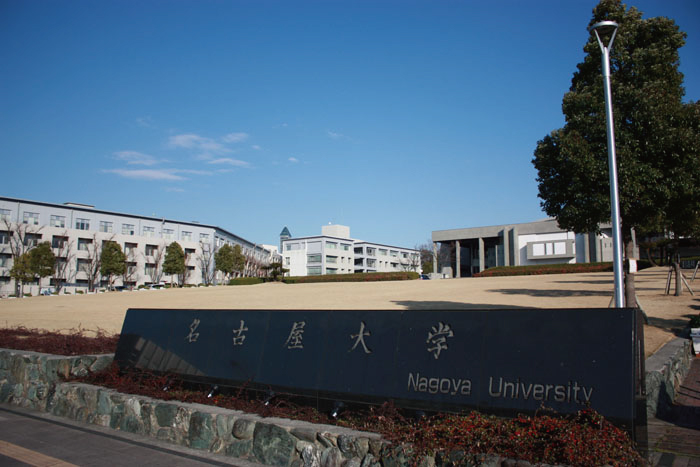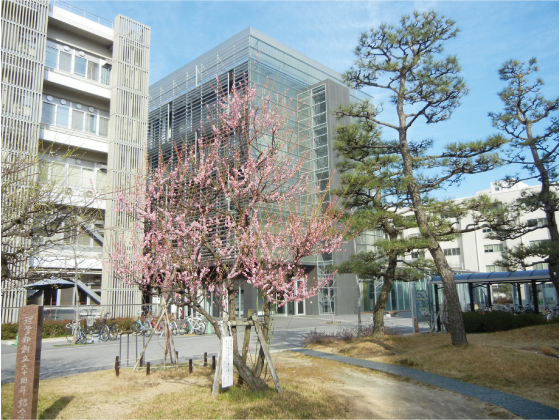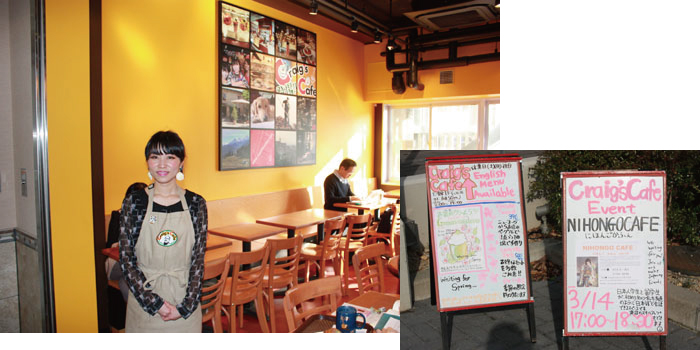Top page > Useful Information
Some notes and advice for international students and researchers who are interested in
joining the Department of Earth and Planetary Sciences at Nagoya University
Nagoya City
Nagoya is not the most famous tourist destination in Japan and those of us who live here are quite happy with that. It is a prosperous city that manages to strike a balance- it is neither overwhelmingly large nor too parochial. The economy of the region is mixed with many small and medium sized producers working with larger manufacturers, and in particular Toyota. The headquarters of Toyota is just to the east of Nagoya. Nagoya is served well by two airports, the Shinkansen and several private train lines.
Nagoya has a vibrant nightlife centered on the Sakae district. This includes an active live music scene that is a great attraction to many young Japanese and visitors alike. The foreign community here consists mainly of foreign students and English teachers. Many of these are short-term residents. There is however a significant number of foreigners, who chose to make this their place to live, work and bring up a family. There are self-help groups for young families with playgroups run in English and several schools with at least part of the curriculum taught in English. The International Center close to the main railway station does a commendable job of offering services in English and other languages to foreign residents
(http://www.nic-nagoya.or.jp/lang.htm).

Nagoya University
Nagoya University has origins reaching back to the late 1800s and it is one of the 7 old imperial universities. It has a student population of about 20 thousand. There are many bigger universities, but Nagoya University punches well above its weight- particularly in the sciences- and we are keen to showcase our Noble laureates in Chemistry and Physics. Another research highlight is the Institute of Transformative Bio-Molecules (http://www.itbm.nagoya-u.ac.jp) a major new research initiative in chemical and life sciences run largely in English. Nagoya University is the principal site of higher education and research in central Japan and one of the top ranked universities in Asia.
There are many international exchange programs and a university Japanese language educational program that has a good reputation. There is an English language undergraduate program, G30, which employs many foreign faculty members.
Department of Earth and Planetary Sciences
The Earth and Planetary Science department was established in 1949 and was the first department in Japan to combine the different disciplines of Earth and Planetary Science in one department. In other universities teaching and research of Earth science is still commonly divided into multiple departments of geophysics, geology, and petrology and mineralogy. Our department in Nagoya has a strong sense of collegiality and there are few of the barriers between different subjects that hinder interdisciplinary studies.

Our Department of Earth and Planetary Science has two foreign faculty members—one from Belgium and the other from the UK. There is an active exchange student exchange program with Bristol University in the UK.
The Department belongs to the Graduate School of Environmental Studies, which covers the spheres of Earth, Urban and Human Environment studies. There is a faculty member who is devoted to attending to the needs of foreign students (http://www.env.nagoya-u.ac.jp/en/contact/advisor.html). Our Department collaborates closely both in education and research with members of the Center for Chronological Research (http://www.nendai.nagoya-u.ac.jp/en/), the Nagoya University Museum (http://www.num.nagoya-u.ac.jp/english/), the Earthquake and Volcano Research Center (http://www.seis.nagoya-u.ac.jp/index_e/), and the Disaster Mitigation Research Center (http://www.gensai.nagoya-u.ac.jp).
The Departmental offices and most of the faculty members are located in the science building E. On the ground floor this building hosts a very popular coffee shop (https://www.facebook.com/Craigscafe), which not only serves great coffee but also acts as an excellent social hub.

Applying for a Position in our Department
Most of our foreign students come as master’s or doctoral students. There are different ways to find financial support for a study period at Nagoya University. Many are accepted as MEXT government scholars before they arrive. More information about visas, scholarships and other matters is given on the web site of the Nagoya University Education Center for Foreign Students (http://www.ecis.nagoya-u.ac.jp/en/).
When looking for a suitable supervisor, we suggest you take the following points into consideration.
i) We recommend you decide what general subject or field you are interested in and find a suitable potential host. There is information available on the group websites concerning the research speciality of the staff and contact details.
ii) Sending a short curriculum vitae (1–2 sides of A4) helps us make a quick decision. The curriculum vitae should include your age and academic history including high school. Ideally you should include your grades at both high school and university and summarize any awards, publications, conference presentations that you have given and any other information that might help us decide your suitability for a post in our department. You should also include contact details for 2-4 prospective referees. Please make sure that these referees know that we may be in touch.
iii) We are much more likely to respond to a contact that is addressed directly to a possible host and contains details of what the applicant is hoping to do in our department.
Summary of the Department Education System
The undergraduate course is 4 years with the 4th year mainly devoted to a graduation thesis, which is an introduction to graduate-level research. The master’s course is 2 years and the doctoral course is an additional 3 years. Japanese students are generally 18 to 19 years old when they join the university.
The university operates on a credit system and the requirements for credits depend on the class and class instructor. Master course students require credits from taught classes in addition to completing a research project. Both masters and doctoral students are required to write a research thesis. With only a few exceptions, these theses are written in English. At the end of their study, students also give a formal presentation of their work. Most of these presentations are given in Japanese with a smaller number in English.
The Department is organized into groups or koza. Koza consist of groups of faculty members and students who work on similar themes. The koza hold regular research seminars. Students will generally be assigned a desk in a room assigned to their koza. Please note there is some potential for confusion about the term ‘Department’. This applies both to our Department of Earth and Planetary Science group (地球惑星科学系) and the larger Department of Earth and Environmental Sciences (地球環境科学専攻), which includes the Hydrospheric-Atmospheric Science group. Sorry, but that’s the way it is.
Q&A for international students
You can also find useful information at http://www.ecis.nagoya-u.ac.jp/ .
1. How did you prepare the necessary money for your study abroad?
Many students saved money by working either full or part time before they join the university. Others received support from their families. A significant proportion of the international students have MEXT scholarships, which covers all the tuition fees and basic living costs. There is also the possibility of being recommended for a variety of smaller value scholarships. These are competitive and availability varies from one year to the next.
2. How did you find your living accommodation?
After being accepted at Nagoya University, many international students find a place in a student dormitory. These places are very popular and the stay has a limit of 6 months to 1 year. After this period, students usually find accommodation through real estate agents. Many students received helpful advice from other students, the Education center for international students of Nagoya University, and the International Student advisor of the Graduate School of Environmental Studies.
3. How did you obtain an appropriate visa for your stay?
All the students obtained the necessary visas for studying in Japan from the Japanese embassies in their home country. In most cases, the documents needed for the application can be sent by post, but the applicant may have to collect the visa in person.
4. What are the main problems you have encountered living in Japan?
The three main points raised are:
1) the high cost of living;
2) language problems, in particular the challenge presented by documents written in Japanese; and
3) differences in the food — however, most students said they quickly adapted to the different cuisine.
5. What are the good points about Nagoya University?
The following good points were listed by international students.
High standards in education and research
Good access
Many international students
Good facilities
The campus of Nagoya University is very beautiful, and the Japanese classes are very interesting
Polite staff and a great working atmosphere
Warm-hearted and helpful people
















